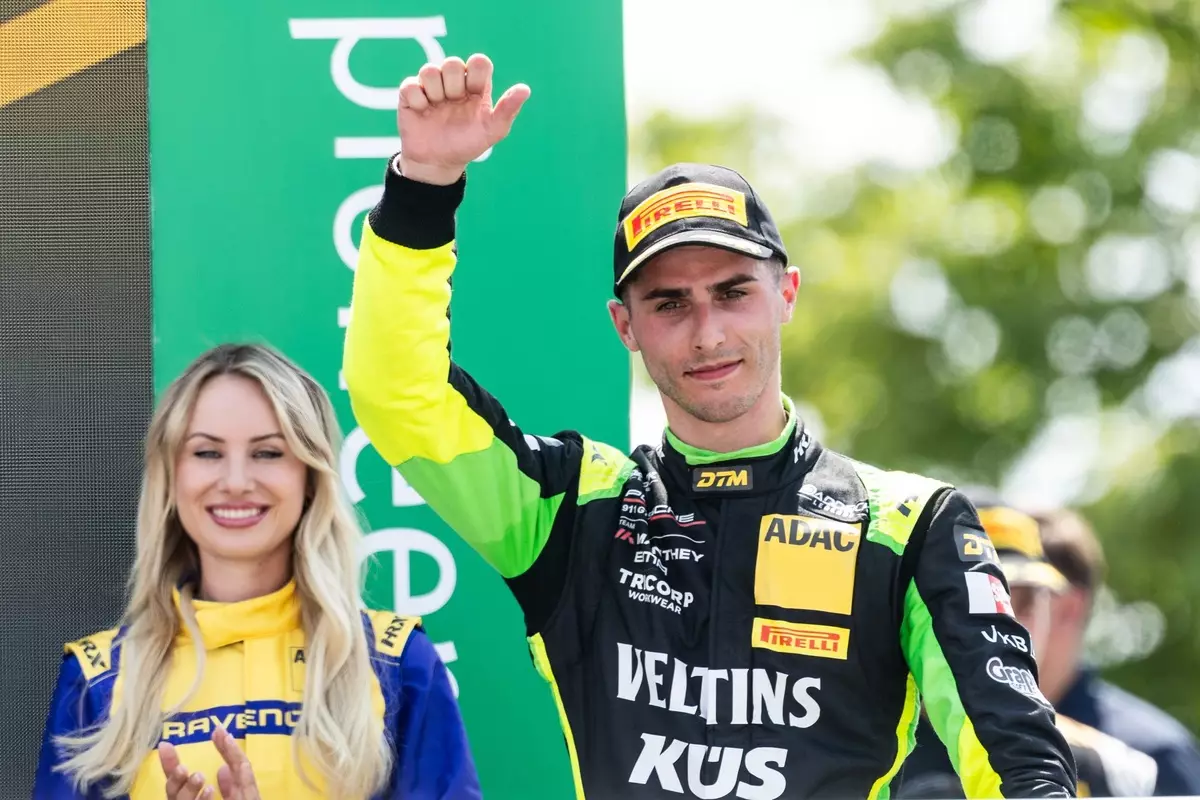The second DTM race at the iconic Norisring circuit unfolded as a stunning showcase of resilience, tactical brilliance, and raw racing passion. From the very beginning, this event challenged drivers with a brutal onslaught of incidents and unpredictable turns that kept spectators on the edge of their seats. The chaos in Turn 1 set the stage—Marcos Wittmann’s BMW tangled with Mirko Bortolotti’s Lamborghini, Nicki Thiim’s Lamborghini, and Jules Gounon’s Mercedes, resulting in multiple retirements. The crushing accidents underscored the perilous nature of the street circuit, where even the slightest mistake can spell disaster. Amidst the carnage, Morris Schuring’s Porsche was damaged, illustrating how fragile race positions can be in such treacherous conditions.
The race’s restart was not straightforward; it was behind the safety car after the track was cleared of debris, with the drivers choosing their moments carefully. Thierry Vermeulen, who started on pole, maintained his lead through the initial laps, demonstrating command and consistency. Meanwhile, from sixth position, Thomas Preining made an aggressive charge, capitalizing on pit stop strategies and daring overtakes. His move from sixth to third early in the race hinted at his underlying determination and strategic acumen.
This race was a chess match—scheduled pit stops, overcuts, and undercuts played a critical role in shaping the outcome. Vermeulen’s decision to stay out longer allowed Jack Aitken and Preining to gain positions, creating a dynamic midfield battle. Yet, the narrative was further complicated by a significant accident involving Fabio Scherer’s Ford and Gilles Magnus’s Aston Martin, which forced further caution and showcased how easily the lead can slip away in these high-pressure moments.
Strategic Warfare and Skillful Overtakes
The pivotal moments in this race lay in the pit stops. The leaders, particularly Vermeulen, Aitken, and Preining, made calculated decisions that would ultimately decide their fate. The overcut strategy employed by Aitken and Preining earned them crucial track position, setting the stage for a fierce late-race battle. Preining’s team executed a quick and clean pit stop, allowing him to jump ahead of Aitken after the second round of stops. Once in the lead, Preining demonstrated not only skill but patience, holding off a relentless Aitken who was eager to reclaim the top spot.
Preining’s victory was hard-earned and reflected a masterclass in racecraft. His ability to adapt to the unpredictable conditions, combined with a flawlessly executed strategy, distinguished him from the rest. His words after the race captured this sentiment: “This win was really hard-fought today.” His start—racing from sixth to third—set a confident tone early on, while his confrontation with Aitken displayed a level of tactical maturity that many drivers in his position often lack.
The race was not without further drama. Riccardo Feller’s incident with Luca Engstler—rear-ending the latter—highlighted how critical precision in braking and judgment is on a street circuit. Such moments serve as stark reminders that race wins are not solely about outright speed but also about managing less glamorous but equally vital facets like car control and situational awareness.
The Triumph of Calculated Risk and Determination
Ultimately, Preining’s measured aggression paid off. As the laps dwindled, his ability to anticipate Aitken’s moves and respond with perfect timing proved decisive. Crossing the finish line 1.5 seconds ahead, he demonstrated that strategic foresight and unwavering focus are indispensable in high-stakes racing. His comments resonated with the core ethos of motorsport: battling adversity through intelligence and heart.
This race also underscored how fragile lead positions can be at circuits like Norisring. Racing’s unpredictable nature—highlighted by incidents, safety car periods, and strategic gambles—ensures that no victory is guaranteed until the final lap. Preining’s win was a testament to perseverance, tactical brilliance, and the importance of a well-coordinated team effort. It’s a reminder that success in motorsport is rarely about pure speed alone but often about making the right decisions at the right moments.
Going forward, the championship landscape remains fiercely competitive. Preining’s victory has reinvigorated his campaign, tying him with Jordan Pepper and keeping the title race open. As the series moves to the Nurburgring, drivers and fans alike will remember this race as a vivid example of racing at its most intense—where victory is reserved not just for the fastest but for the smartest and most resilient competitors.


Leave a Reply